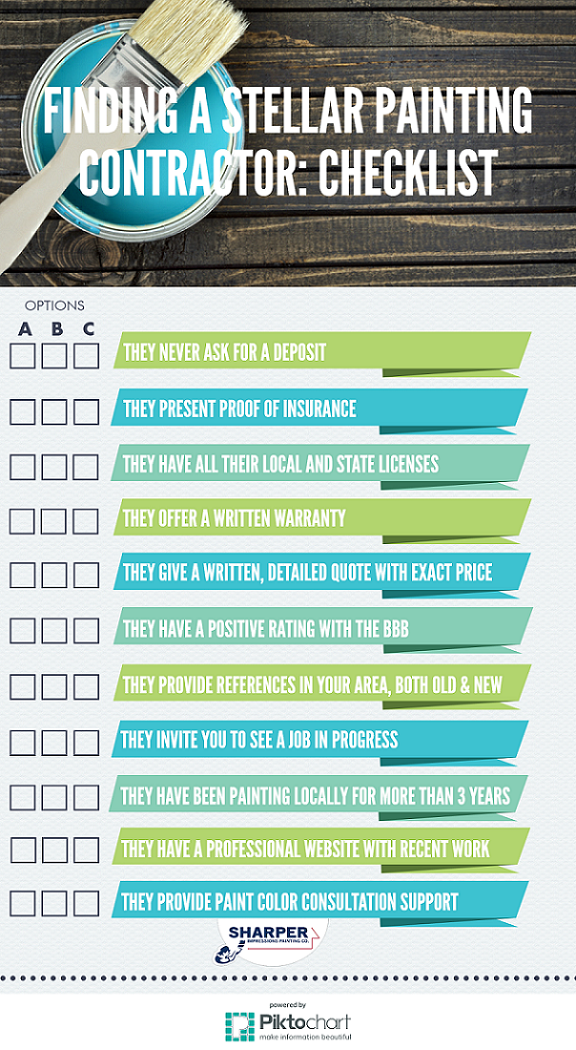Comprehending The Essential Differences Between Interior And Exterior Paint Is Crucial For Your Project. This Understanding Can Substantially Impact Your Decision-Making Procedure-- Learn What You Must Consider Prior To Beginning
Comprehending The Essential Differences Between Interior And Exterior Paint Is Crucial For Your Project. This Understanding Can Substantially Impact Your Decision-Making Procedure-- Learn What You Must Consider Prior To Beginning
Blog Article
Short Article By-Fitzpatrick Hegelund
When you're picking between exterior and interior paint, it's essential to recognize their fundamental differences that affect both efficiency and appearances. Interior paints are crafted for reduced VOC degrees and smoother coatings, making them perfect for interior areas, while exterior paints are designed to sustain extreme weather and UV exposure. Each kind offers a distinct purpose, however recognizing when to use one over the other can significantly influence your job's outcome. So, what elements should you consider when making your choice?
Make-up and Solution
When choosing in between interior and exterior paint, recognizing their composition and formulation is important. Interior paints usually include a lower quantity of volatile natural substances (VOCs), making them safer for interior air top quality. You'll discover they typically have a smoother finish, which improves their capacity to stand up to stains and permits much easier cleansing. They're made to hold up against the rigors of indoor environments, including varying moisture levels and temperature level changes.
On the other hand, outside paints are developed to endure harsher conditions. They typically include higher degrees of pigments and additives to withstand fading from UV rays, as well as to avoid mold and mold and mildew growth. Their make-up consists of more binders and resins, which provide better adhesion to surface areas exposed to the aspects. This guarantees the paint can stand up to rain, snow, and rising and fall temperature levels without peeling or breaking.
Performance and Sturdiness
Assessing performance and sturdiness is crucial when selecting between interior and exterior paint. Inside paint is developed for surfaces that experience less damage. It commonly resists fading and scuffing, making it optimal for living areas and rooms. However, it may not stand up well in high-moisture areas like bathroom and kitchens without appropriate formula.
On the other hand, exterior paint faces harsher conditions. https://smalljobpaintersnearme80999.idblogz.com/31922039/when-researching-industrial-painting-service-providers-reveal-the-selection-of-services-they-provide-that-can-boost-your-residential-property-and-address-particular-market-needs to hold up against UV rays, rainfall, and temperature variations. This kind of paint often includes ingredients that stop mold and mildew and mold development, making certain long life in numerous climates. When you make use of outside paint, you can anticipate it to last a number of years much longer than interior paint, provided it's used properly.
exterior painting contractors minneapolis depends on the surface options. Interior paints typically have a range of surfaces for aesthetic allure, while exterior paints prioritize toughness over sheen. If you're seeking something that can manage the aspects, outside paint is your best choice.
On the other hand, if you're concentrated on indoor aesthetics with much less worry for extreme conditions, interior paint may be appropriate. Ultimately, your option should align with the certain needs of the atmosphere.
Aesthetic Factors to consider
A fresh layer of paint can change a space, however visual considerations play an essential function in your choice in between exterior and interior choices. When you're choosing paint, consider the mood you intend to develop. Interior paint allows you to discover a broader range of colors and coatings, enabling you to reveal your individual design and enhance your home's ambiance. Whether you select soft pastels or vibrant hues, the ideal interior paint can make your spaces really feel comfy, lively, or calm.
On the other hand, exterior paint needs to straighten with your home's design and the surrounding environment. Right here, you're not simply making a style declaration; you're additionally thinking about aesthetic appeal. Choosing colors that balance with your community can boost your home's worth and aesthetic appeal. Keep in mind that exterior paint is also subject to fading and weather condition modifications, so picking a classic color can save you from frequent repainting.
Inevitably, take into consideration just how each alternative fits your vision. By aligning your paint choice with your preferred aesthetic, you can produce spaces that mirror your personality while maintaining capability.
Conclusion
When it involves choosing paint, recognizing the essential distinctions in between exterior and interior options is essential. Interior paints focus on looks and reduced VOCs, making them perfect for enhancing your interior spaces. On the other hand, exterior paints are designed for sturdiness and weather resistance, safeguarding your home from the elements. By considering your certain requirements and the atmosphere, you can with confidence pick the appropriate paint to attain the look and durability you prefer for your space.
